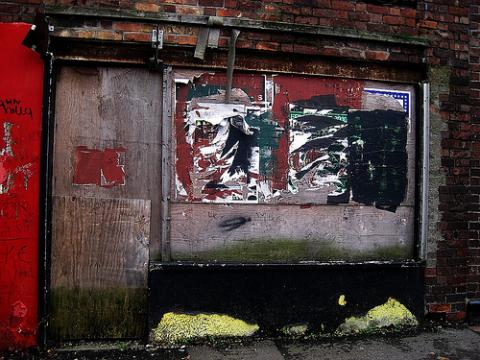Sleepwalking towards the abyss

Eighty years from now the failed Irish austerity experiment will be a central chapter in all macroeconomic textbooks. By Aidan Regan.
Austerity without investment is the key contemporary Irish economic policy. Whether it is made explicit or not, the underlying assumption guiding this policy is the belief that reducing budget deficits through cuts in capital and current expenditure can be growth enhancing because it will provide certainty for people to spend. You do not have to be an economist to recognise the luncy of any argument that is based on reducing money in people’s pockets to encourage expenditure. The following quote from Wolfgang Muchau in the Financial Times this morning is worth reproducing in full:
“I cannot see how somebody with a solid training in macroeconomics, and with a minimal sense of honesty, could come up with a fairy tale of an expansionary fiscal contraction. Or, that coordinated austerity programmes would not affect growth in the short run…recent IMF studies show that, on average, a fiscal consolidation of 1 percent of GDP, has reduced real private consumption by 0.75 percent within two years and a fall in real GDP by 0.62 percent. There may be reasons why a country wants to introduce austerity but do not fool yourself into thinking it has no macroeconomic impact (i.e. jobs and growth).”
He then goes on to argue that the problem in the Eurozone is that EU political leaders are treating the closed 17-country Eurozone economy as a small open economy. The same flawed logic applies to Ireland, and is captured by the orthodox accountancy exercise carried out by the new ‘independent’ (yes, I am being sarcastic) fiscal advisory council last week.
The Irish government and most economists consider austerity necessary to bring down the debt-GNP ratio but fail to recognise that in a fixed EMU regime (we cannot devalue) it is totally counter-productive. A percentage point reduction in the debt without growth will mean continued hardship and recession. It is a vicious circle and it is wrong. In the absence of public or private investment Ireland will suffer ten years of stagnation, emigration, crime and unemployment.
Why? To pay for the bad debt of private banks. This is both a moral outrage and economically and technically flawed. For the next four months the Irish media, supported by a plethora of orthodox economists, will rally around our weak political system and conservative government and exhort them to act tough and impose another €3.6-4bn adjustment on an economy that is on its knees. Then, they will encourage the government to do the same next year.
The impact (and this is about the closest prediction one can make) will bury the economy and by default the social fabric of Irish life. More closed shops, more empty houses, more derelict buildings, more poverty, higher unemployment and a general cultural malaise that will sap the confidence out of people and encourage a new and massive wave of emigration.
Think about the last fiscal adjustment in the late 1980s and ask why Ireland subsequently recovered. Firstly, between 1989 and 1994 Ireland received almost £4.65bn in European regional and social cohesion funds (this is probably equivalent to at least €20bn today). Between 1989 and 2000 Ireland received a total of £17bn. In addition it received more than double this from inward foreign direct investment (FDI). The economy grew, but unemployment was not reduced to 5% until 1999.
To make the point further, the European Regional and Social Cohesion Funds were designed to prepare Ireland for the single European market and eventual Monetary Union. The Irish government treated Europe like an ATM machine (and hence, the understandable frustration across Europe with Irish political elites). Between 1989 and 1993 (the last fiscal adjustment) Ireland used European funding to build 307km of national primary roads; upgraded Shannon, Cork and Dublin airports; and built 250km of waste sewage works amongst a whole host of other developmental infrastructure projects (see McSharry and White, 2000).
The current structural adjustment has zero investment or growth plans built into it. Furthermore, the adjustment is almost 7 times bigger than that pursued from 1987-1990. According to the IMF, what Ireland is experiencing is the largest adjustment ever carried out by a Western capitalist country. Even more importantly, Ireland devalued its currency in 1986 and 1992. This had a huge impact on export led growth. Today we are faced with an internal devaluation – in other words, cutting wages. This will remove money from people’s pockets and prolong the domestic slump. It is economic lunacy.
All of these variables make the current situation qualitatively and quantitatively different from previous fiscal adjustments, yet the policy prescriptions are the same. The attempt to adjust and pay for private bank debt and a low tax regime in a fixed currency means that Ireland can only be described as a laboratory EMU test experiment. Eighty years from now the failed Irish experiment will be a central chapter in all macroeconomic textbooks. The Fine Gael/Labour government do not recognise this reality. In the absence of massive strategic investment they are sleep walking the country into the abyss. Granted, they are operating under significant political constraints. But, we should expect those outside the political party structure to speak truth to power. We should expect the validity claims of orthodox economists to be put under intense scrutiny. We need a new movement to replace an ageing media, economic, and political aristocracy. A battle of ideas must commence.
Aidan Regan is a PhD candidate in Public Policy at University College Dublin. aregan.wordpress.com.
Image top: Calotype46.
